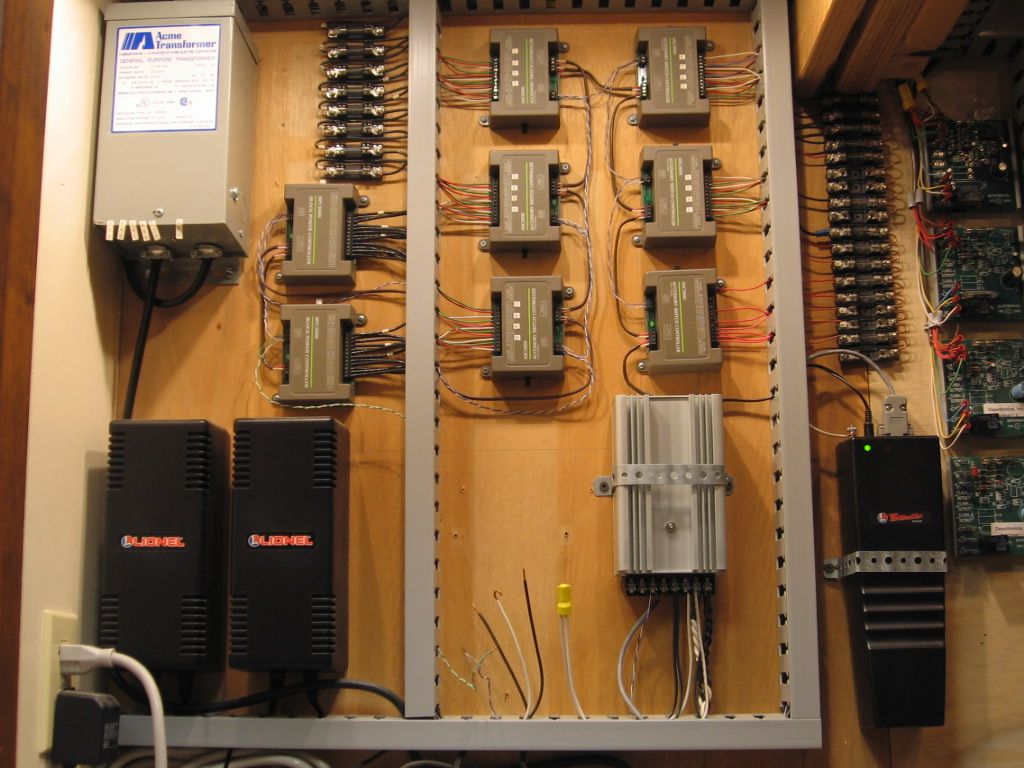Hi Everyone,
Quick question, I have been debating adding an additional 180-watt Lionel Powerhouse to my layout.
My current power setup is as follows:
Lionel 180-Watt Powerhouse
Lionel Legacy Powermaster
Lionel Legacy Base and Legacy Remote
Naturally, all of the wiring is pretty straightforward (I do not have blocks and/or power districts on my layout):
-Powerhouse to Legacy Powermaster via molex plug (Powermaster has ID: TR 2 in my Legacy system)
-Legacy Base Common to Powermaster Common (U to U)
-Hot and Common wires (A and U respectively) to my track from Powermaster
If I were to add an additional 180-watt Powerhouse, how exactly would I accomplish the inclusion of the additional brick?
Would I need to purchase an additional Legacy Powermaster, create the same aforementioned wiring set-up and then "phase" the Powermasters by connecting common to common on each? Or is there a way to simply add the 180-watt brick using only one Legacy Powermaster?
I appreciate the input.
Best,
Michael


















